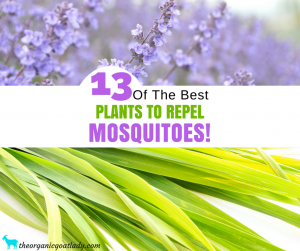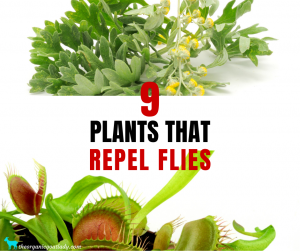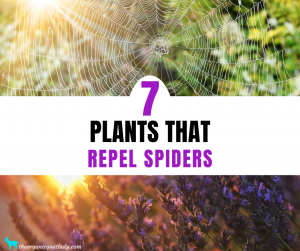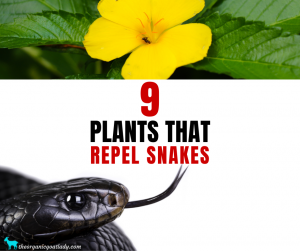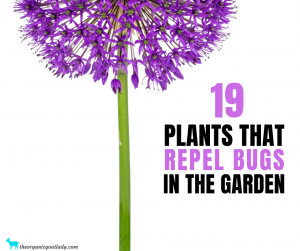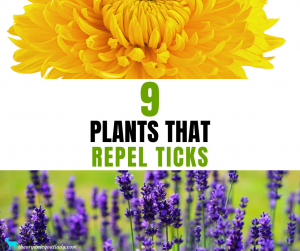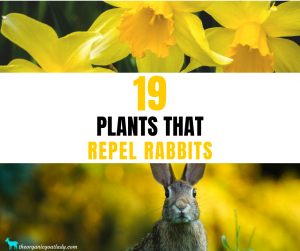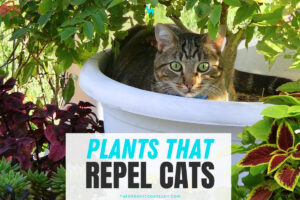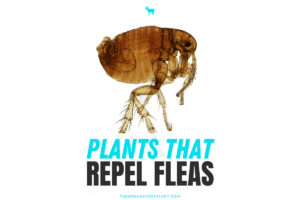Are you overrun with pesky wasps? Are you wondering what plants repel wasps? If you’re looking for the best plants and a natural way to repel wasps outdoors then check out this list of plants and other ideas!
This site contains affiliate links. If you make a purchase using one of these links, I may earn a commission. Please click here for more information about cookies collected and our privacy policy.
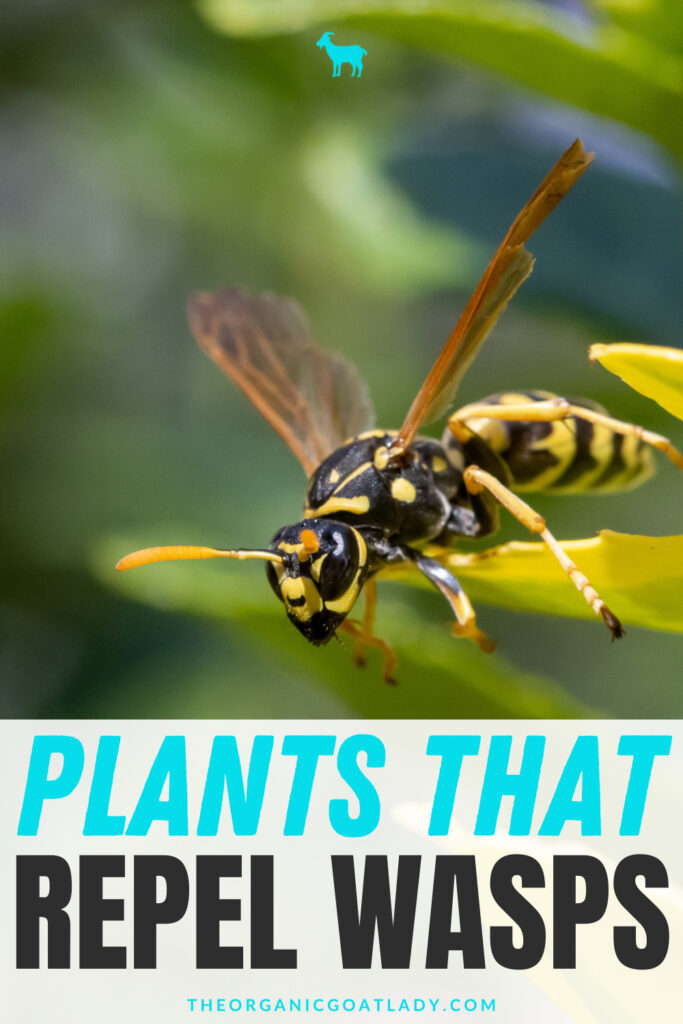
What Plants Repel Wasps?
Nobody wants to suffer from wasp stings! Wasps can be dangerous and are definitely something you want to avoid, especially if you have young children or pets.
Several plants are known to have natural repellent properties and their strong smell may deter wasps and other insects. While these plants may not guarantee complete protection, they can help reduce the presence of wasps in your garden or outdoor areas.
Types of Wasps
There are many different species of wasp found around the world, but some of the most common and well-known types include:
1. Yellowjackets (Vespula and Dolichovespula spp.): Yellow jackets are one of the most common and aggressive types of wasps. They are known for their bright yellow and black coloration and build paper nests, often underground or in wall voids. They are attracted to sugary foods and are known to be aggressive when defending their nests.
2. Hornets (Vespa spp.): Hornets are larger than many other wasps and are known for their painful stings. The European hornet (Vespa crabro) and the Asian giant hornet (Vespa mandarinia) are two notable species. Hornets typically build large, football-shaped nests high in trees or structures.
3. Paper Wasps (Polistes spp.): Paper wasps are known for their distinctive, papery nests, which they build by chewing wood fibers into a paper-like material. They are often brown or reddish-brown and are less aggressive than yellowjackets but can still sting when provoked.
4. Mud Daubers (Sphecidae family): Mud daubers are solitary wasps that construct nests out of mud. They are typically slender and elongated and are not usually aggressive. They prey on spiders and other insects, which they paralyze and store in their mud nests as food for their larvae.
5. Cicada Killers (Sphecius spp.): Cicada killers are large, solitary wasps known for their ability to capture and paralyze cicadas, which they then use to provision their nests. They are not typically aggressive toward humans but may sting if handled.
6. Ichneumon Wasps (Ichneumonidae family): Ichneumon wasps are parasitic wasps that lay their eggs on or inside other insects or insect larvae. They are beneficial for controlling pest populations but are not harmful to humans.
7. Bald-Faced Hornets (Dolichovespula maculata): Bald-faced hornets are a type of yellowjacket and are known for their distinctive black and white markings. They build large, spherical nests, often attached to tree branches or shrubs. They can be aggressive when their nests are threatened.
8. Tarantula Hawks (Pepsis and Hemipepsis spp.): Tarantula hawks are large, solitary wasps known for hunting tarantulas. They paralyze tarantulas with their stings and lay eggs on the immobilized spiders, providing a live food source for their larvae.
9. Sawflies (Symphyta suborder): Sawflies are related to wasps and bees and are often confused with them. Unlike most wasps, sawflies are herbivorous and do not possess the same hunting behaviors.
These are just a few examples of the diverse world of wasps. While some wasps are known for their aggressive behavior and painful stings, others are beneficial to ecosystems and can help control pest populations. It’s essential to identify wasps accurately and take appropriate measures if they become a nuisance or threat in your area.
Best Wasp Repellent Plants
Here are some of the best fragrant plants that are commonly used to repel wasps:
1. Mint: Mint plants, such as peppermint and spearmint, are known for their strong and pleasant minty fragrance. This aroma can help deter wasps and other insects from your outdoor areas when planted strategically.
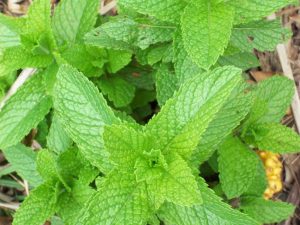
Here’s how to use the mint plant to repel wasps:
1. Plant Mint Around Problem Areas: Plant mint in pots or in the ground around outdoor seating areas, near doors, or in other locations where wasps are a nuisance. The scent of mint can act as a natural deterrent.
2. Crush Mint Leaves: If you’re sitting outdoors and want to deter wasps, you can crush mint leaves and rub them on your skin or clothing. Peppermint and spearmint’s strong fragrance can help keep wasps away from you.
3. Regular Pruning: Mint can grow vigorously, so be sure to prune it regularly to keep it from becoming too large and overgrown. Pruning also releases more of the minty scent into the air.
4. Harvest and Use Mint: Harvest the mint leaves regularly for culinary purposes, such as making fresh mint tea or adding mint to recipes. This not only encourages healthy growth to make natural deterrents for wasps and other insects, but also allows you to enjoy the benefits of mint in your meals.
Keep in mind that while mint can help deter wasps, it may not provide complete protection, especially in areas with a strong attraction for these insects (e.g., food sources). Therefore, it’s often a good idea to use mint plants in combination with other natural repellents and preventive measures to effectively manage wasp issues in your outdoor spaces.
2. Basil: Basil plants, with their aromatic leaves, can also be used to help repel wasps and other flying insects from your outdoor spaces.
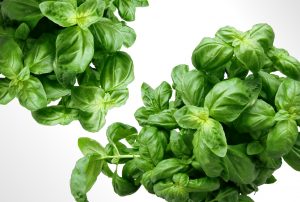
Here’s how you can use the basil plant to deter wasps:
1. Plant Basil Around Problem Areas: Consider planting basil in pots or directly in the ground near areas where you want to discourage wasps, such as outdoor seating areas, picnic spots, or near doorways. The strong scent of basil can act as a natural repellent.
2. Crush Basil Leaves: To enhance the effectiveness of basil in repelling wasps, crush some basil leaves and rub them on your skin or clothing when you’re outdoors. This can help keep wasps away from you.
3. Regular Pruning: Just like mint, basil can grow vigorously. To ensure healthy growth and maximize its fragrance, prune the basil regularly. Pinching off the tips of the stems can encourage bushier growth.
4. Harvest Basil: Basil is an excellent addition to your herb garden! Harvesting basil leaves for culinary purposes is not only a practical use of the herb but also helps release its scent into the air. Use fresh basil leaves in cooking, salads, and beverages.
While basil can be a useful natural deterrent, it may not provide complete protection against wasps, especially if there are strong attractants for them in the vicinity (e.g., sugary drinks or food). Therefore, it’s often best to combine basil plants with other natural repellents and proactive measures to effectively manage wasp issues in your outdoor areas.
3. Lavender: Lavender plants are not only known for their pleasant fragrance and beautiful purple flowers, but also for their ability to repel wasps and other flying insects.
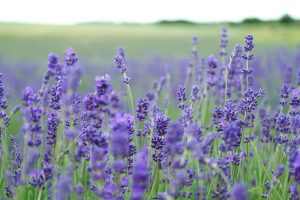
Here’s how you can use lavender plants to deter wasps:
1. Plant Lavender Around Problem Areas: Consider planting lavender in your garden, around outdoor seating areas, near doorways, or anywhere you want to discourage wasps from congregating. Lavender’s strong and aromatic scent can act as a natural repellent.
2. Dried Lavender Sachets: Hang dried lavender sachets in areas prone to wasp activity. These sachets can be made by bundling dried lavender flowers in small cloth bags or pouches. Hang them near windows, entrances, or in outdoor dining areas.
3. Fresh Lavender Bouquets: Placing fresh lavender bouquets on outdoor tables or near seating areas can help keep wasps away while adding a pleasant fragrance to your outdoor space.
4. Essential Oil Spray: Create a lavender essential oil spray by mixing a few drops of lavender essential oil with water. Spray this mixture around your outdoor areas to deter wasps. Shake well before use as essential oils do not mix well in water.
5. Harvest and Use Lavender: Regularly harvesting lavender flowers for various purposes, such as making lavender sachets or using them in potpourri, can help release the fragrance and enhance its repellent properties.
6. Lavender Oil on Skin: You can also apply lavender essential oil diluted with a carrier oil (like coconut or olive oil) to your skin as a natural repellent. It can deter wasps and provide a pleasant scent. You can find a great Essential Oil Insect Repellent here!
Lavender is generally effective at repelling wasps, but it may not offer complete protection in areas with a strong attraction for these insects, such as open food and sugary drinks. To effectively manage wasp issues in your outdoor spaces, consider combining lavender plants with other natural repellents and proactive measures like keeping food and beverages covered and maintaining a tidy environment.
4. Marigolds: Marigold plants are known for their vibrant colors and are often used as ornamental flowers in gardens. While they are not as commonly associated with wasp repellent properties as some other plants like mint or lavender, some people believe that marigolds can help deter wasps and other insects. Marigolds contain compounds that may repel certain pests.
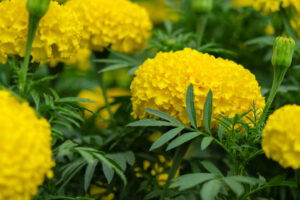
Here’s how you can use marigold plants to potentially repel wasps:
1. Plant Marigolds Around Problem Areas: Consider planting marigolds in your garden, near outdoor seating areas, or around entrances to your home. Marigold flowers have a distinct odor that some insects find unpleasant, which may deter wasps.
2. Interplant with Other Plants: You can interplant marigolds with vegetables or other plants in your garden to help protect them from wasp activity. For example, placing marigolds near tomatoes or cucumbers may help keep wasps away from these crops.
3. Use Marigold Flowers in Bouquets: Placing marigold flowers in bouquets or vases on outdoor tables can add color to your outdoor space and potentially discourage wasps.
4. Deadhead Regularly: Deadheading (removing spent flowers) can encourage marigold plants to produce more blooms. The more marigold flowers you have, the more potential repellent effect they may have on wasps.
While marigolds may have some repellent properties, it’s essential to understand that they are not a guaranteed or foolproof method for repelling wasps. The effectiveness of marigolds as a natural deterrent can vary from one location to another and may depend on factors such as the specific wasp species and the availability of other food sources in the area.
To effectively manage wasp issues in your outdoor spaces, it’s advisable to combine marigold plants with other natural repellents, such as mint or lavender, and proactive measures like keeping food and drinks covered, maintaining a tidy environment, and using wasp traps if necessary.
Wasp-Repellent Plants
5. Citronella: Citronella plants are well-known for their ability to repel mosquitoes and other flying insects due to their strong lemony fragrance. While they are primarily associated with repelling mosquitoes, citronella plants can also have a deterrent effect on wasps and other flying pests.
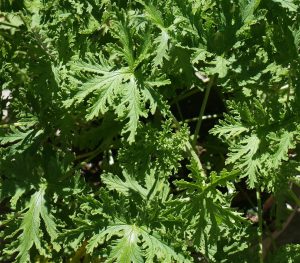
Here’s how you can use citronella plants to potentially repel wasps:
1. Plant Citronella Around Problem Areas: Consider planting citronella plants in pots or directly in the ground near areas where you want to discourage wasps, such as outdoor seating areas, picnic spots, or near doorways. The strong citrus-like scent of citronella can act as a natural repellent.
2. Citronella Candles or Oil Lamps: Citronella oil is commonly used in candles and oil lamps. Lighting citronella candles or lamps in outdoor spaces can help create a protective barrier against not only mosquitoes but also wasps and other flying insects.
3. Citronella Essential Oil Spray: Mix a few drops of citronella essential oil with water and use it as a natural repellent spray. You can apply this mixture to your skin or clothing to help deter wasps. Did you know you can make your own DIY bug sprays? Find a great Essential Oil Insect Repellent here!
4. Harvest Citronella Leaves: Harvesting citronella leaves and crushing them can release their fragrance into the air, potentially discouraging wasps. You can also use these leaves to make homemade citronella candles or oil infusions.
5. Regular Maintenance: Like any other plant, citronella plants benefit from regular maintenance. Prune them as needed to encourage healthy growth and to release more of the citronella scent.
While citronella can be effective at repelling wasps and other flying insects, it may not offer complete protection in areas with a strong attraction for these insects, such as food sources or open sugary drinks. To effectively manage wasp issues in your outdoor spaces, consider combining citronella plants with other natural repellents and proactive measures like keeping food and drinks covered, maintaining a tidy environment, and using wasp traps if necessary.
6. Wormwood: Wormwood (Artemisia absinthium) is an herb that is known for its strong, bitter scent and its potential to repel various insects, including wasps.

Here’s how you can use the smell of wormwood plants to potentially deter wasps:
1. Plant Wormwood in Problem Areas: Consider planting wormwood in your garden or near outdoor seating areas, picnic spots, or entryways to your home. Wormwood’s strong and bitter fragrance can act as a natural repellent.
2. Use Wormwood as a Barrier: Planting wormwood as a border or barrier around your outdoor space can help discourage wasps from entering. The pungent scent may deter them from approaching.
3. Regular Pruning: To keep wormwood healthy and encourage its fragrance, prune it regularly. Pruning also prevents it from becoming overly tall and unwieldy.
4. Harvest Wormwood Leaves: Harvesting wormwood leaves and crushing them can release their scent into the air. You can use these crushed leaves to create a wormwood tea or spray or simply scatter them around problem areas.
5. Wormwood Sachets: Create sachets or pouches filled with dried wormwood leaves and hang them near outdoor dining areas, windows, or entrances. These sachets can help deter wasps and other pests.
6. Use Wormwood in Floral Arrangements: Adding wormwood stems to floral arrangements on outdoor tables can provide both aesthetics and potential wasp-repelling benefits.
It’s important to note that while wormwood may have repellent properties, its strong and bitter fragrance may not be to everyone’s liking. Additionally, some people are sensitive to the chemicals found in wormwood, so be cautious when using it. As with other natural repellents, wormwood may not offer complete protection in areas with strong attractants for wasps, such as food sources. To effectively manage wasp issues in your outdoor spaces, consider combining wormwood with other natural repellents and proactive measures like keeping food and drinks covered and using wasp traps if necessary.
7. Chrysanthemums: Chrysanthemum plants, commonly known as mums, are well-known for their insect-repelling properties, thanks to the natural pesticide pyrethrin found in their flowers. Pyrethrin is used in many commercial insect repellent products, and it can be effective in deterring a variety of insects, including wasps.
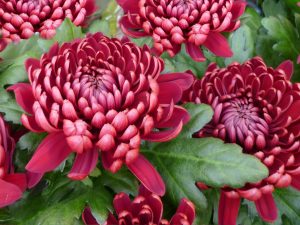
Here’s how you can use chrysanthemum plants to potentially repel wasps:
1. Plant Chrysanthemums in Problem Areas: Consider planting chrysanthemums in your garden, near outdoor seating areas, or around doorways and windows to your home. Chrysanthemum flowers contain pyrethrin, which can act as a natural repellent against wasps and other flying insects.
2. Use Chrysanthemum-Based Insecticides: You can purchase insecticides or sprays containing pyrethrin derived from chrysanthemum flowers. Apply these products to your outdoor areas to create a protective barrier against wasps.
3. Chrysanthemum Bouquets: Placing fresh chrysanthemum bouquets on outdoor tables can add beauty to your space while potentially discouraging wasps. The presence of pyrethrin in the flowers may deter these insects.
4. Dry Chrysanthemum Flowers: You can also dry chrysanthemum flowers and use them in various DIY pest repellent projects. For example, you can make sachets or potpourri with dried chrysanthemum flowers to repel wasps.
5. Regular Maintenance: Like any other plant, chrysanthemums benefit from regular maintenance. Prune them as needed to encourage healthy growth and to release more of the pyrethrin scent.
While chrysanthemum plants and pyrethrin-based products can be effective at repelling wasps and other insects, it’s essential to follow safety precautions when using pyrethrin.
Keep in mind that pyrethrin can also affect beneficial insects, so use it judiciously. Additionally, chrysanthemum plants may not provide complete protection in areas with strong attractants for wasps, such as food sources.
To effectively manage wasp issues in your outdoor spaces, consider combining chrysanthemums with other natural repellents and proactive measures like keeping food and drinks covered and using wasp traps if necessary.
8. Lemon balm: Lemon balm (Melissa officinalis) is an aromatic herb with a lemony fragrance that can be used to help deter wasps and other flying insects from your outdoor spaces.
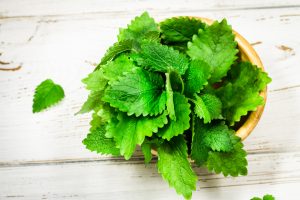
Here’s how you can use lemon balm plants to potentially repel wasps:
1. Plant Lemon Balm Around Problem Areas: Consider planting lemon balm in your garden, near outdoor seating areas, or close to doorways and windows. Lemon balm’s strong lemon scent can act as a natural repellent against wasps.
2. Crush Lemon Balm Leaves: To enhance its effectiveness, crush lemon balm leaves and rub them on your skin or clothing when you’re outdoors. This can help keep wasps away from you and your guests.
3. Lemon Balm Sachets: Create sachets or pouches filled with dried lemon balm leaves and hang them near outdoor dining areas, windows, or entrances. These sachets can help deter wasps and provide a pleasant fragrance.
4. Use Lemon Balm in Herbal Teas: Lemon balm leaves can be used to make delicious herbal teas. While the tea may not act as a direct wasp repellent, the scent of lemon balm in the air can potentially deter wasps from approaching.
5. Regular Pruning: Regularly pruning lemon balm plants can help maintain their growth and release more of the lemony scent into the air.
Lemon balm is generally considered safe and can be a useful natural deterrent against wasps. However, keep in mind that its effectiveness may vary depending on factors such as the specific wasp species and the availability of other food sources in the area.
To effectively manage wasp issues in your outdoor spaces, consider combining lemon balm with other natural repellents and proactive measures like keeping food and drinks covered and using wasp traps if necessary.
10. Tansy: Tansy (Tanacetum vulgare) is a perennial herb known for its strong and somewhat bitter scent. Some people believe that tansy plants can help deter wasps and other insects due to their fragrance.
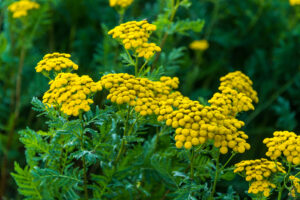
Here’s how you can use tansy plants to potentially repel wasps:
1. Plant Tansy in Problem Areas: Consider planting tansy in your garden, near outdoor seating areas, or close to doorways and windows. Tansy’s strong aroma may act as a natural repellent against wasps.
2. Create Tansy Sachets: Make sachets or pouches filled with dried tansy leaves and hang them near outdoor dining areas, windows, or entrances. These sachets can help deter wasps and other pests while releasing the tansy scent.
3. Regular Pruning: Tansy plants benefit from regular pruning to maintain healthy growth and release more of their fragrance into the air.
4. Consult Local Regulations: Be aware that in some regions, tansy is considered an invasive plant and may be subject to local regulations or restrictions. Check with your local agricultural or environmental authorities before planting tansy.
While tansy may have repellent properties, it’s important to note that its strong scent may not be to everyone’s liking. Additionally, some people may have skin sensitivities to tansy, so be cautious when handling it.
As with other natural repellents, tansy may not offer complete protection in areas with strong attractants for wasps, such as food sources. To effectively manage wasp issues in your outdoor spaces, consider combining tansy with other natural repellents and proactive measures like keeping food and drinks covered and using wasp traps if necessary.
While these plants may help reduce wasp activity in your outdoor spaces, it’s important to note that they may not provide complete protection, especially if there’s a strong attraction for wasps in the area (e.g., food sources). It’s often best to use a combination of natural repellents and other wasp control methods, such as traps or professional pest control services, to effectively manage wasp infestations.
Natural Ways to Repel Wasps
In addition to planting wasp-repelling plants, there are several other natural ways to repel wasps and discourage them from nesting in your outdoor spaces:
1. Keep Food and Trash Covered: Wasps are often attracted to food and sugary beverages. Keep food and drinks covered when dining outdoors, and ensure that trash cans have tightly sealed lids. Clean up any spills promptly.
2. Use Wasp Traps: You can create homemade wasp traps using a mixture of sugar and water or vinegar. Place the traps away from where you and your guests gather to divert the wasps’ attention.
3. Hang Fake Nests: Wasps are territorial and may avoid areas where they think another wasp colony already exists. Hang up fake wasp nests, which are available in stores or can be made from paper bags, to deter them from nesting nearby.
4. Essential Oils: Some essential oils, such as clove, eucalyptus, and lemongrass, can repel wasps. Mix a few drops of these powerful essential oils with water and spray it around your outdoor areas.
5. Cucumber Slices: Wasps are said to dislike the smell of cucumber. Place cucumber slices or peels in areas where wasps are a problem to deter them.
6. Soap and Water Spray: Create a mixture of soapy water and spray it directly on wasps when you encounter them. This can disrupt their ability to fly and deter them from returning.
7. Avoid Bright Colors: Bright colors, especially floral patterns, can attract wasps. Consider wearing neutral or earth-toned clothing when spending time outdoors.
8. Cover Sweet Scents: Avoid using scented lotions, perfumes, and candles with sweet fragrances, as these can attract wasps.
9. Regular Maintenance: Keep your outdoor spaces well-maintained. Trim overgrown vegetation and keep the area tidy to minimize hiding spots and nesting sites for wasps.
10. Seal Entry Points: Inspect your home for potential entry points, such as cracks in walls, gaps around windows, and holes in eaves. Seal these openings to prevent wasps from entering your home.
Remember that while these natural methods can help deter wasps, they may not provide complete protection, especially in the presence of established wasp colonies. If you have a severe wasp problem or a nest on your property, it’s advisable to seek professional pest control assistance for safe and effective removal.
Additional Ways to Repel Wasps
Here are some additional ways to repel wasps and keep them away from your outdoor spaces:
1. Cayenne Pepper Spray: Create a homemade wasp repellent spray by mixing water and cayenne pepper. Spray this mixture around the areas where wasps are a problem. The strong scent and spicy nature of cayenne can deter them.
2. Vinegar: White vinegar can be an effective wasp repellent. Mix equal parts of white vinegar and water in a spray bottle and apply it to areas where wasps congregate.
3. Garlic Spray: Crushed garlic cloves mixed with water can create a strong-smelling repellent that may discourage wasps. Spray it in problem areas, but be prepared for the garlic scent.
4. Lemon or Lime Juice: Citrus juices can deter wasps due to their acidity and strong scent. Mix lemon or lime juice with water and use it to wipe down outdoor surfaces.
5. Mothballs: Hanging mothballs around your outdoor space may help deter wasps. Be cautious with this method, as mothballs contain chemicals that can be harmful to pets and children if ingested.
6. Decoy Predators: Consider using decoy predators like fake owls or birds of prey to scare away wasps. Wasps may mistake these decoys for actual threats.
7. Sound Deterrents: Some people use sound deterrents, such as wind chimes or ultrasonic devices, to repel wasps. The noise may disturb their nesting and foraging behavior.
8. Remove Fallen Fruits: If you have fruit trees, pick up fallen fruits promptly. Overripe and rotting fruits are attractive to wasps.
9. Cloves: Scatter whole cloves around your outdoor area or rub them on wooden surfaces to deter wasps. Cloves have strong odors and a pungent scent that many insects dislike.
10. Dryer Sheets: Some people find that placing scented dryer sheets, like those with a lavender or citrus fragrance, in outdoor seating areas can help repel wasps.
11. Netting and Screens: Use netting or screens to cover food and drink areas when dining outdoors. This physical barrier can prevent wasps from accessing your meals.
12. Educate Your Family and Guests: Teach your family and guests to stay calm and avoid swatting at wasps. Quick movements and swatting can provoke them to become aggressive.
13. Professional Pest Control: If you have a persistent or large wasp problem, it’s best to consult with a professional pest control service. They can assess the situation and provide effective solutions for removal and prevention.
Remember that wasps can become more aggressive when threatened, so always exercise caution when trying to repel them or remove nests. It’s often safer to rely on natural repellents and professional pest control services when dealing with persistent or aggressive wasp infestations.
Plants That Repel
If you are looking to repel other animals from your yard and garden be sure to check out:

